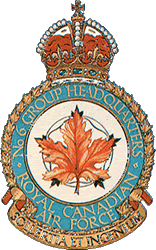
15 Halifaxes from 408 and 419 Squadrons were joined by 15 Wellingtons from 426 and 428 Squadrons on a mining operation to the Frisian Islands. The crews were over the garden at between 700 and 1,500 feet, sowing 54@1500 lb and 8@1000 lb mines.
![]()
F/O J. Snider from 419 Squadron returned without mining as they could
not find the pinpoint.
F/Sgt R. Goddard and crew flying Halifax II DT-629 coded VR-V were
attacked by a ME-110, it was claimed damaged. There was 3 cannon holes
and 6 machine gun holes in the Halifax.
W/O2 B. Levasseur RCAF![]() and crew, flying Halifax II DT-639 coded VR-B, failed to return
from this operation.
and crew, flying Halifax II DT-639 coded VR-B, failed to return
from this operation.
- Sgt W. Robinson, RCAF
Sgt G. Lloyd, RAF
Sgt J. Grant, RAF
W/O2 H. Jacobsen, RCAF
F/Sgt R. Wilson, RCAF
W/O2 W. Gray, RCAF
![]()
F/O J. Millward from 426 Squadron was hit by flak, the electrical system and hydraulics were damaged. They brought the mines back and landed safely at Topcliffe.
![]()
Sgt K. Radcliffe and crew from 428 Squadron flying Wellington X HE-239
coded NA-Y were attacked twice by a ME-110, there was no claim or damage.
Sgt V. Sylvester and crew flying Wellington X HE-505 coded NA-X were
attacked 3 times by a JU-88's outbound. On the last pass, the JU-88 came
in to 150 yards, dead astern was hit, caught fire and dove into the sea.
This combat was also seen by Sgt L. Straight from 428 Squadron and confirmed.
![]()
While part of the group was mining, 1 Halifax from 408 Squadron and
3 from 419 Squadron attacked Wilhemshaven. These crews were over the target
at between 16,000 and 18,000 feet, releasing 9000 lbs of high explosives
and 12,000 lbs of incendiaries. According to reports, the attack was scattered
with little damage.
![]()